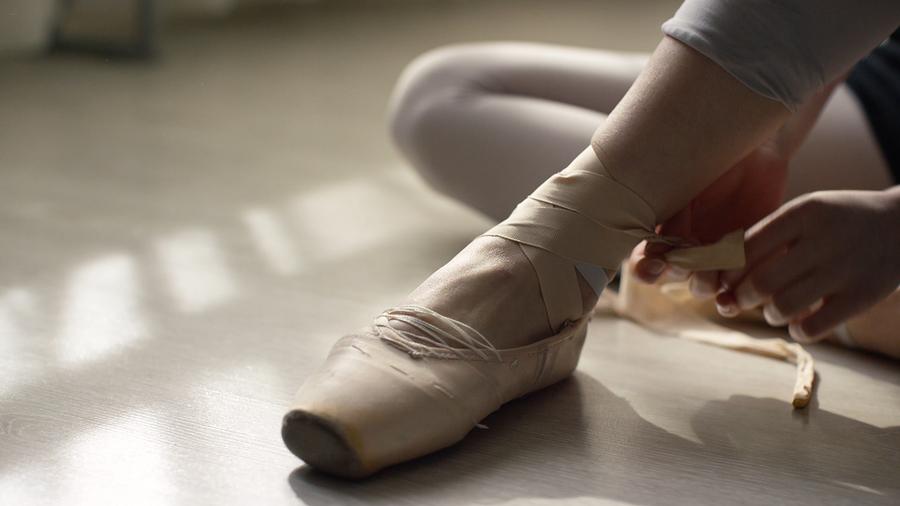Op-Ed: Balancing School and Ballet
March 4, 2020
The roaring applause of the audience circulates throughout the room, as the bright beams of stage lights gleam onto the tulle of my skirt. The intense aches in my arms and legs disappear, concealed by the thrill of performing. With one last step, I take the hands of my peers and bow as the moment comes to a close.
Those few fleeting seconds award aspiring dancers with complete euphoria. But behind all of the beauty and grace that is showcased, there is an extremely challenging sport.
In short, ballet is hard.
The New York Times reported a study by Dr. James A. Nicholas “which examined 61 different activities, [and] ranked ballet most physically and mentally demanding, followed by bullfighting and then football.”
The ranking of ballet compared to other sports is no surprise considering the immense amount of effort and concentration that is required to make progress in this strenuous sport. With training 6 days a week and at least 30 performances a year, ballet is one of the most demanding aspects of my life.
Every morning, I wake up, pack my school and ballet bags, and eat a hearty breakfast. I cherish the valuable time that I have in the morning as it is crucial to ensuring my day goes as smoothly as possible.

Although I try to make effective use of my time at school, I am continuously hampered by several things. Whether it’s lack of sleep or pain and soreness from the previous night’s rehearsal, my schooldays are often impacted by my intensive ballet schedule.
Because of this, I sometimes struggle to participate in class as much as I want to due to difficulty concentrating.
Despite these inconveniences, I enjoy my time at school. Even on mornings following long rehearsals, I am excited to learn.
While school can be quite tiring, the hardest part of my day begins when school ends. Every day, ballet class includes an hour and a half warm-up, starting at 4:15 p.m.
In a standard class, there are two main parts: barre and center.
At the barre, we execute basic combinations utilizing core ballet techniques such as turnout and extensions. We cover everything from tendus and degages, fast and precise leg movements, to rond de jambs and adagio, slower and more supple movements.
In center, we practice a wider variety of combinations such as waltzes, petit allegro, and grand allegro. Center requires an immense amount of core strength and is utilized in every step in ballet. Examples of this can be seen in jumps and turns when holding your core is essential to maintaining a proper, “lifted” position.
One of my biggest challenges in ballet is applying the corrections that I receive as the sport is incredibly detail-oriented. Stage presence and overall flow in movements are fundamental components, but there are many other things dancers need to be aware of.
As if class isn’t demanding enough, I also have rehearsal every day.
At rehearsals, we are constantly preparing for shows and learning new repertoire. The structure of rehearsal never looks the same, but we are always dancing.
This can be a lot of work, but on performance days, all my hard work pays off.
Typical show weekends consist of class on Friday afternoon and an evening performance. Then, eleven hours are spent at the studio on Saturday between classes and two performances. Show weekends are incredibly exhausting, but the thrill of performing conceals much of my fatigue.
My schedule is very intense, but I wouldn’t trade it for the world. Integrarte, my studio, has become my family in many ways, and my love for my friends and teachers is indescribable.
It is hard for me to fully capture the excitement of performing in words. Although rehearsing is often stressful, once I take my first step onto the stage, all of my fears dissipate.
With the glow of the stage lights, attentive gaze of the audience, and a great deal of support from my teachers and peers, I feel most confident when I am on stage.
I am in love with ballet, but not everyone respects and appreciates it the way that I do.
Ballet receives an abundance of criticism from non-dancers who believe that it is overly simplistic. This is not the case considering that a great deal of stamina, core strength, and toned muscles are required for the intensive sport and are crucial components to the effortless appeal ballet gives off.
Regardless of what is going on in the world around me, ballet has a constant presence in my life and an inexplicable ability to make the world around me disappear the second I step on stage. It will always be at the core of who I am.























































